This past weekend I took an intermission to do an event ride named Pedal the Plains (PTP). The ride was 154 miles spread over three days: 24 on Friday, 59 on Saturday and 71 on Sunday.
Pedal the Plains was started in 2012, I believe as an offshoot of “Ride the Rockies” (RTR) ride which has now been going for 30 years. RTR is a week long supported ride of ~400 miles through the mountains and passes of Colorado. PTP was intended to bring a similar experience to the small towns on the eastern plains of Colorado. This results in several interesting comparisons and contrasts:
- RTR is a more strenuous ride, particularly in terms of climbing as each day one might climb several thousand feet over a pass to get to the next town. In contrast, the Great Plains are relatively flat. The distances on the ride are not necessarily shorter (Saturday has an optional century ride), but as long as the wind cooperates, it is easier riding.
- Many of the mountain towns, particularly the resort towns get many visitors through the summer and winter months. As a result, having 2000 (RTR) cyclists come through town is business and not a huge deal since similar events happen fairly often through the year. There are exceptions as not every mountain town is a resort town but one gets polite service but not necessarily a sense this is special. In contrast, these small plains towns seem to have fewer big events (e.g. county fair, rodeo) and having 1000 (PTP) seems like a novelty and a big deal. One definitely gets a sense of hospitality as the town turns out to help take care of their visitors
- PTP has taken an “education” slant. The aid stops are not just places to refuel on bananas and gatorade, but instead each day there are half a dozen educational themed stops. One learns about life on the plains, about energy, about local history and similar themes. As one cycles along, signs have been placed along the route with short educational factoids and tidbits. I think it started with an idea of “this is our chance to show those folks from Denver what it is like to live out here on the plains” and has grown from there.
Overall, I’ve ridden all five of the PTP rides so far (2012-2016) and when my schedule started to line up, seemed like a good excuse to rent a car, get the bike serviced and then also ride a different bike on Pedal the Plains. I once again enjoyed my trip and will show a few photos below in the order I took them.
Day One
Today the schedule was an opening ceremony at 11am, followed by 24 miles riding from Ordway to Fowler. I drove down from my parents place early in the morning.
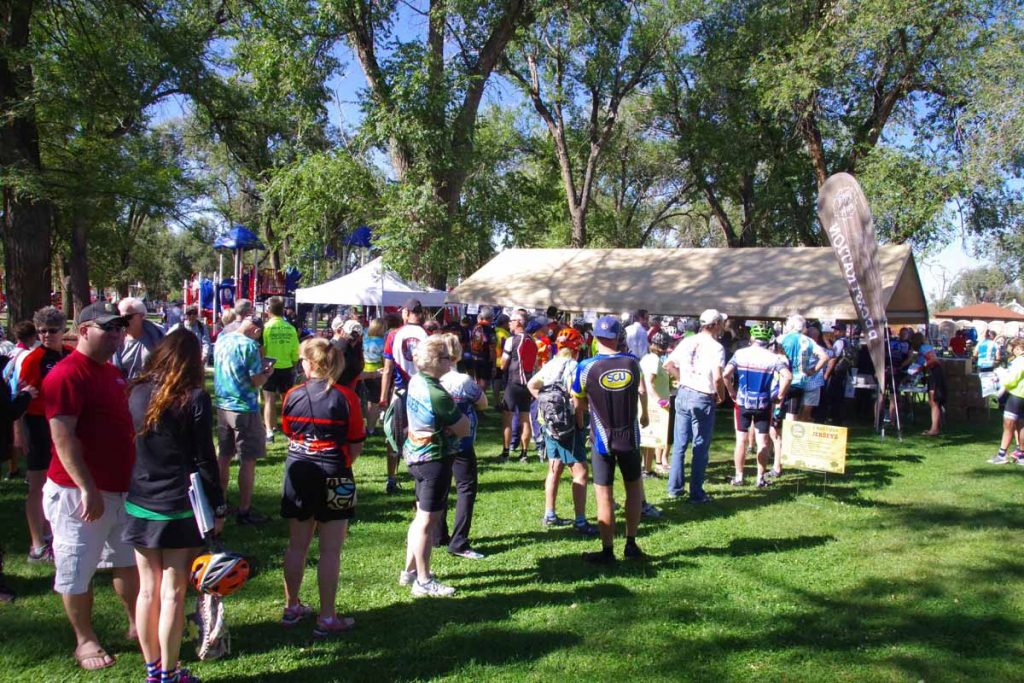
Lines for registration. We were told there were over 1000 participants this year who came from 18 different states. Though the vast majority of people I talked with were from Colorado.
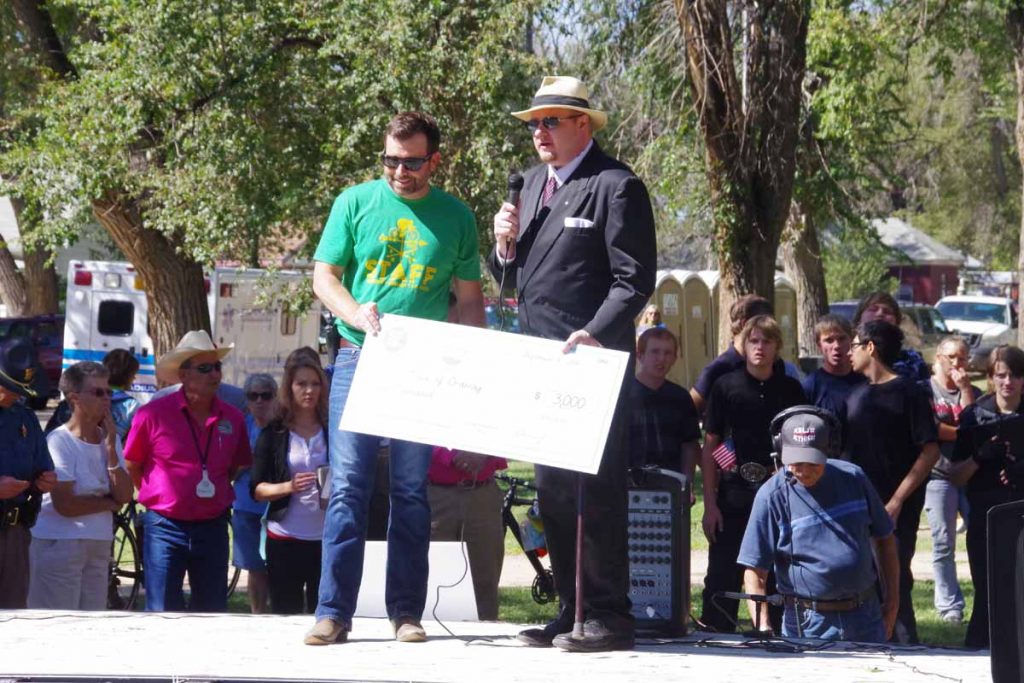
Chandler Smith, tour director presenting a check to the Mayor of Ordway.
The ride is organized by the Denver Post newspaper. The proceeds from the ride go to the Denver Post Community Foundation. That foundation distributes funds at least three different ways (a) each host town gets to pick a local charity to receive funds (b) there is a local art initiative where each town receives funds for a local art project (c) two youth oriented organizations: Future Farmers of America (FFA) and 4H both receive an overall grant. In return both organizations also help provide some volunteers at educational stops.

Our first educational stop was at local exotic animal park. Forget exactly what these critters were, but they also had wallabies and other rescue animals here.

One of the volunteers helping to direct traffic. Overall both route markings and traffic direction was excellent. The busiest intersections had state highway patrol officers or local sheriffs and smaller intersections usually had volunteers such as this one.
For ride as a whole and not just routing, there seem to be several categories of volunteers:
- Approximately 50 people such as this person volunteer in general and help out each day. Many of these seem to come back each year and so have built up knowledge of how to organize the event.
- Governor Hinkenlooper took special interest in getting this event started and his office of local governmental outreach helps with organization as well as providing a number of volunteers.
- Local communities take care of meals as well as volunteers in each town for everything from shuttles to entertainment, etc.
- FFA and 4H clubs come out to help educate as well as provide volunteers.

One of the educational stops. In this case, the Egg Growers association has a nice collection of hard boiled eggs on a stick. At end of each day the wheat growers had a truck with cookies and the Western Dairy Association had a truck with chocolate milk.

Educational stop coming into Fowler, this one at their local historical museum.

Example of newspaper stories from the Fowler Newspaper letting locals know of the coming event.

Reaching Fowler, there was local entertainment including this set of trained hogs.

Evening check presentation ceremony. This time to the FFA.
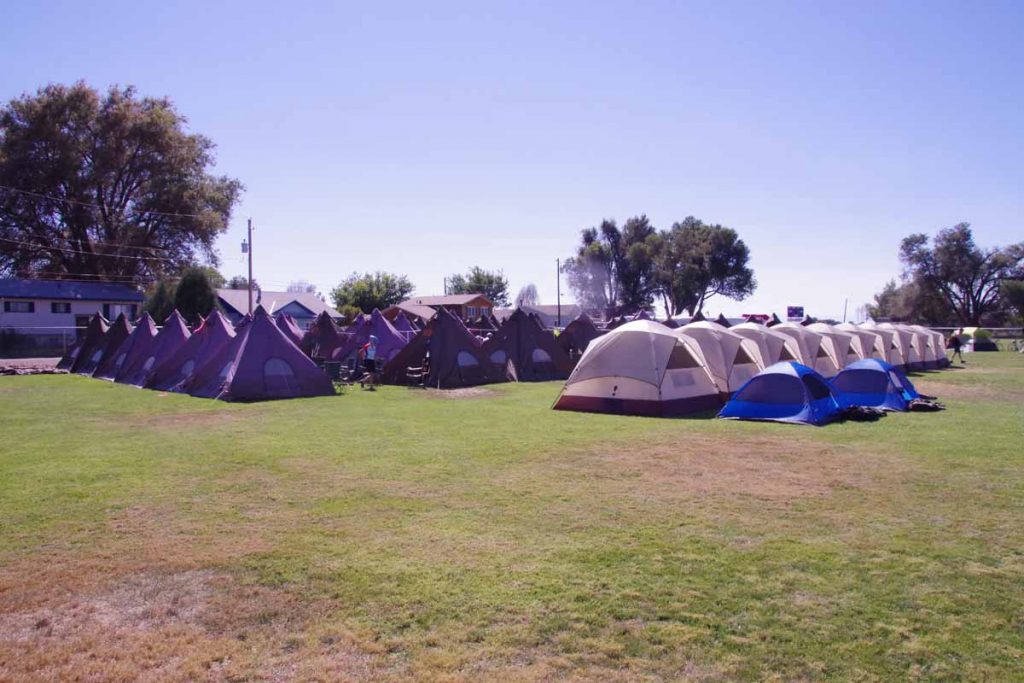
Time to set up my tent in the local field. Overall a fairly easy ride of 24 miles but a lot of nice hospitality. For example, several Fowler churches opened their doors and invited in cyclists who came past. Inside could share cookies and cool water. Also nice chance to talk with locals.
Day Two
Second day the official route was 59 miles with six educational stops. There was an optional century ride and it was possible to register only for the century ride. There was also a five mile “family fun ride”.

Breakfast served from 6:00am to 8:30am. Things started fairly early with a “rolling start” between 7am and 9am so likely not long after 9am the town would be quiet again.

Our tent city under the moon. There were several different lodging options:
- Outdoor camping in local ball field (shown above)
- Indoor camping in the gym
- Sherpa camping, e.g. sleep in a tent city, but set up by others
- Lodging shuttles which ran went to local motels
I did the outdoor camping.

Once the luggage is packed it goes on the truck.

Time to pick up my bike from the “bike corral”. In this case it was a fenced off field with local volunteers checking stickers on the bike with our wrist straps to see that the numbers matched.
After that we were off and cycling.

Local horse riders that we saw along the way (I think they specifically decided to do this to show the cyclists, but not 100% certain).

Rest stop warned us about goat head thorns.

This rest stop was at a local cell phone tower. Viero Wireless, a carrier focused on the plains, was a sponsor and also did this educational stop.

It was tarantula season and these guys were big.
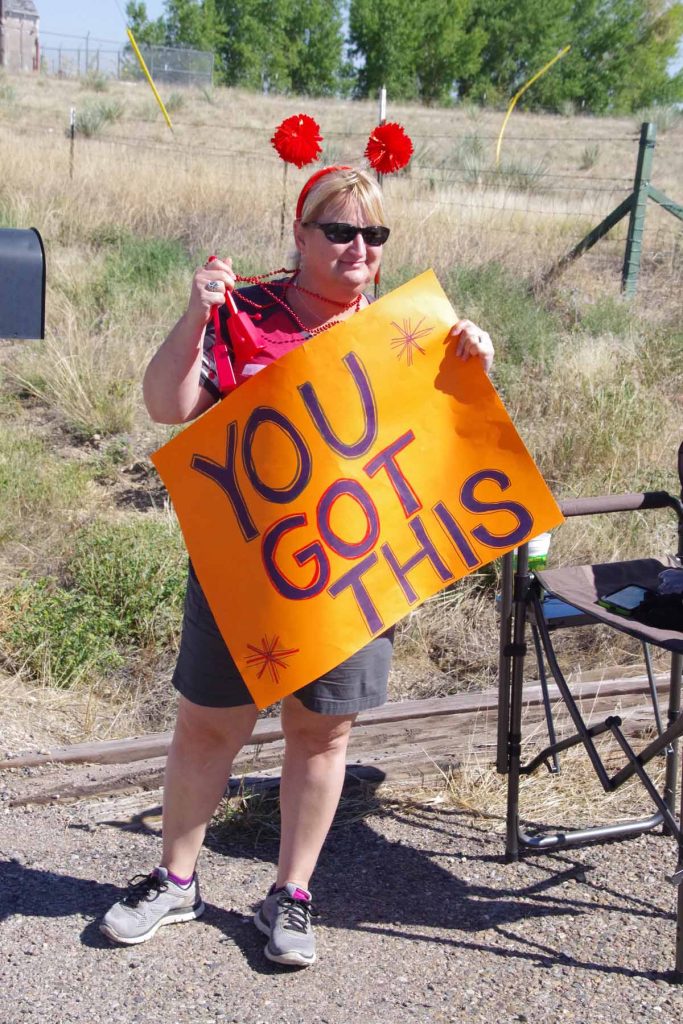
Local encouragement.
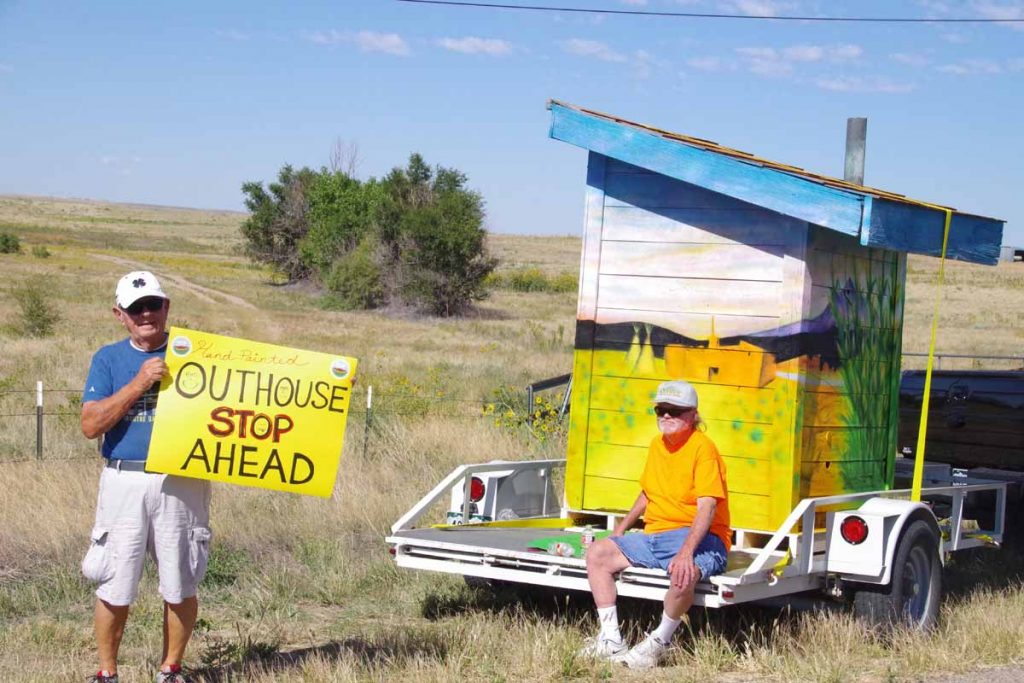
One of the art themes this year was this outhouse. They brought it out along the way as well.

This educational stop had a description of weevils one could purchase that help eat and control goat head plants.

More encouragement.
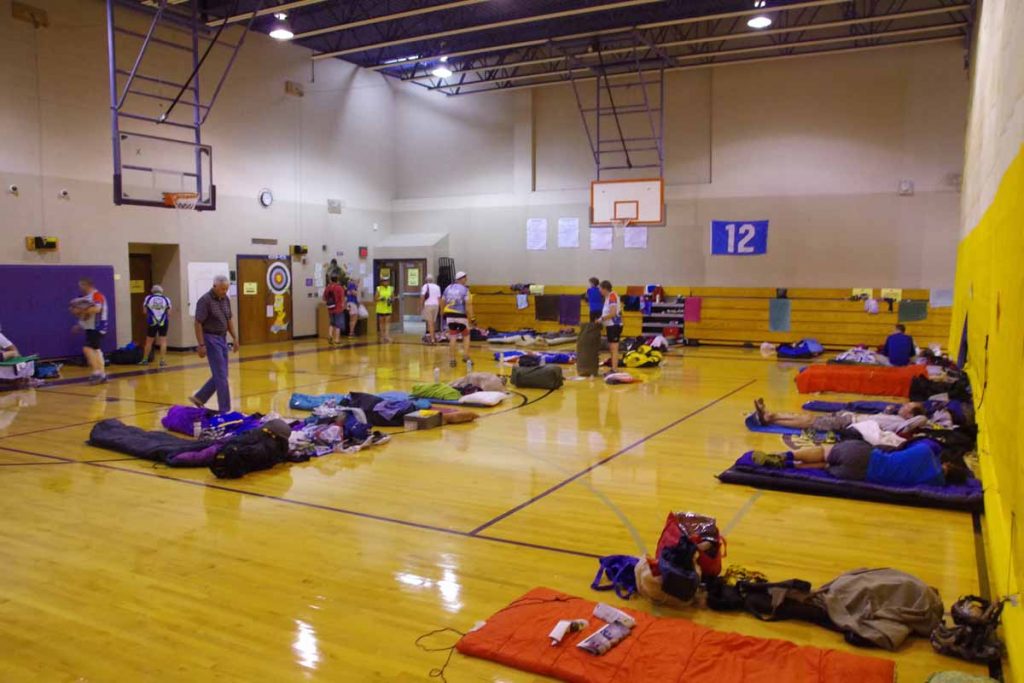
End of the day in La Junta, this time showing the indoor campers. The gym was split into “early risers” and “late sleepers” with different times the lights went on and off.
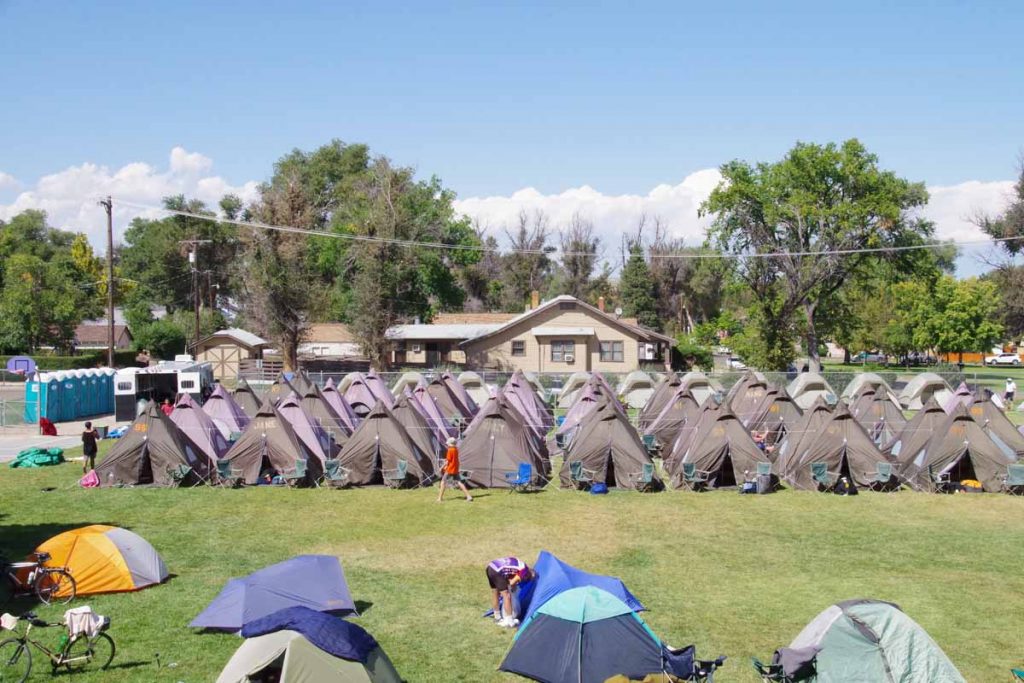
Our camping area.

Artist finishing his work.
Day Three
Our third day cycling agenda was 71 miles.

One of the educational stops was Bent’s Fort, a National Historic Site. It was rather interesting place to look around as well as learn the history.

Example of educational signs that are placed along the way.

Not a formal stop, but this farm had someone pretty talented in creating this local display.

Some political themes to it as well.
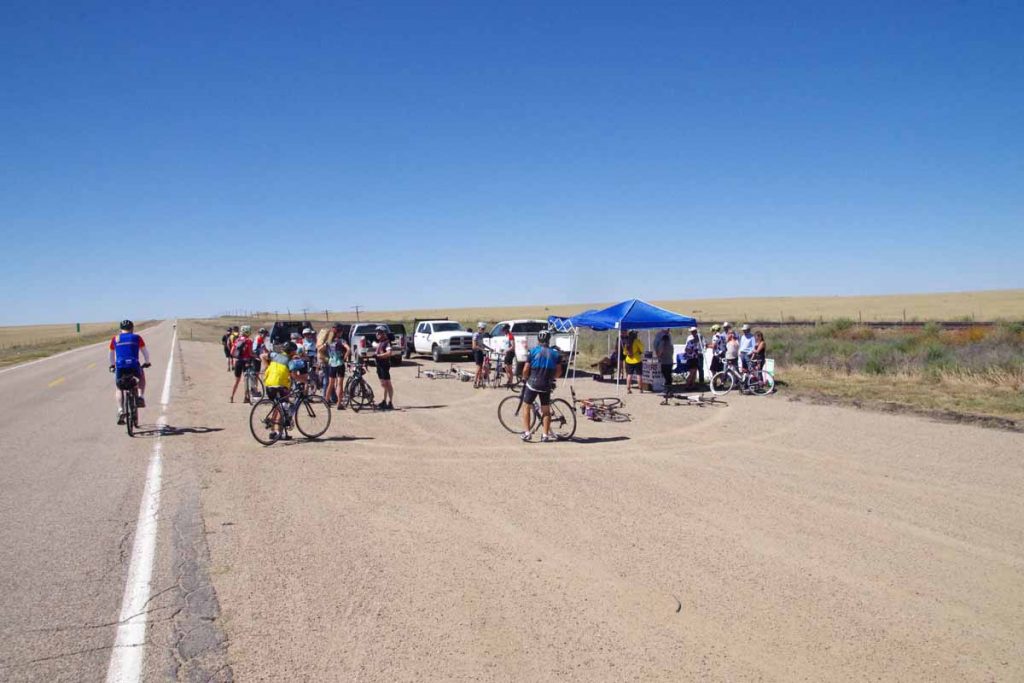
This educational stop was done by cattlemen’s association telling us about beef industry.

Another volunteer directing traffic.

Finish line at end of the ride.
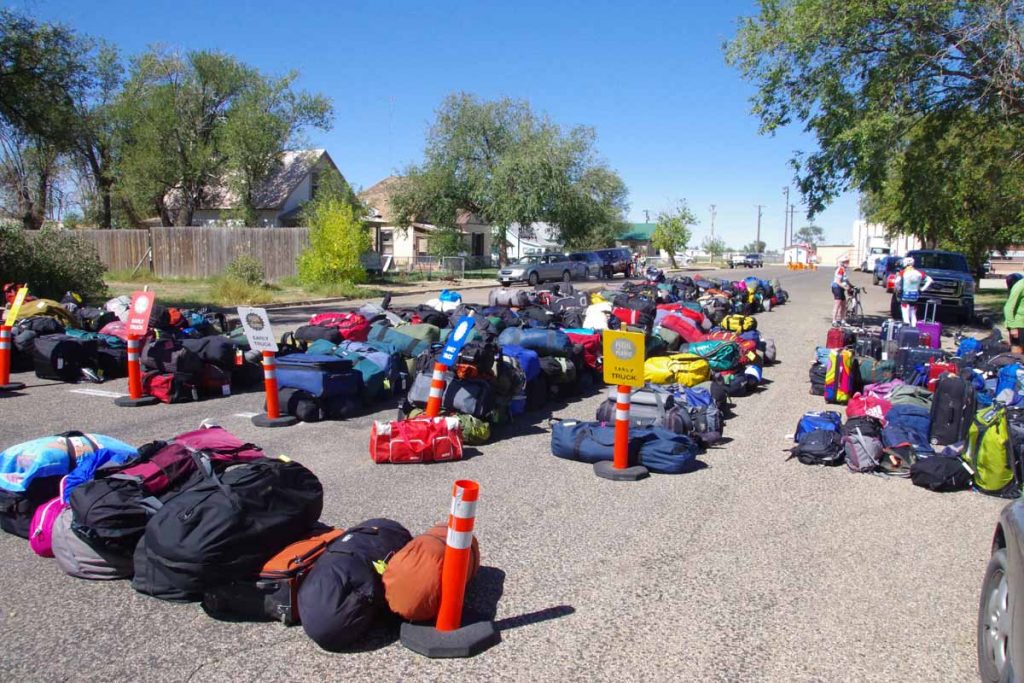
Time to pick up luggage from where it had been unloaded.
Overall, it was a fun ride and well organized. I still really enjoy coming through these little towns as well as nice hospitality. Also a nice little intermission from my overall journey which I will now go back and resume.
